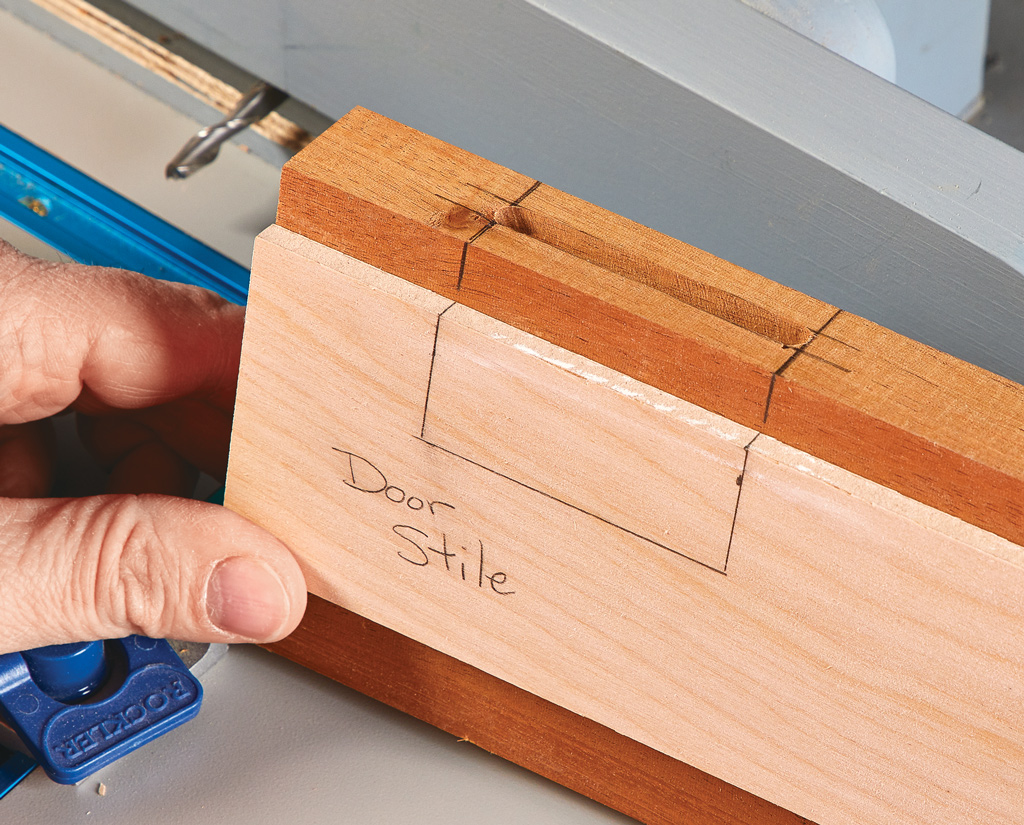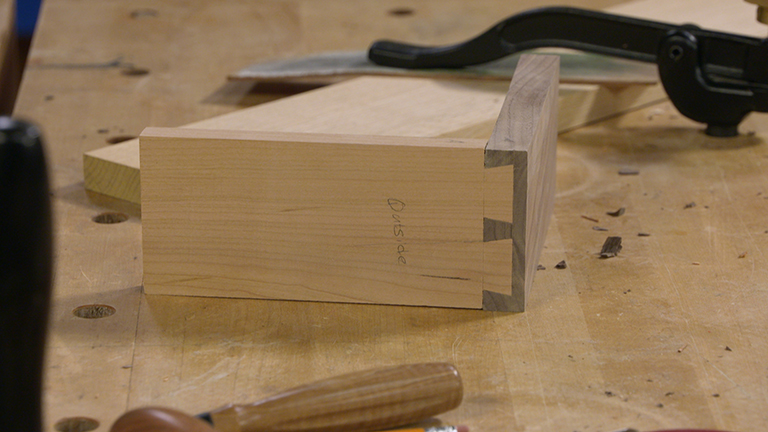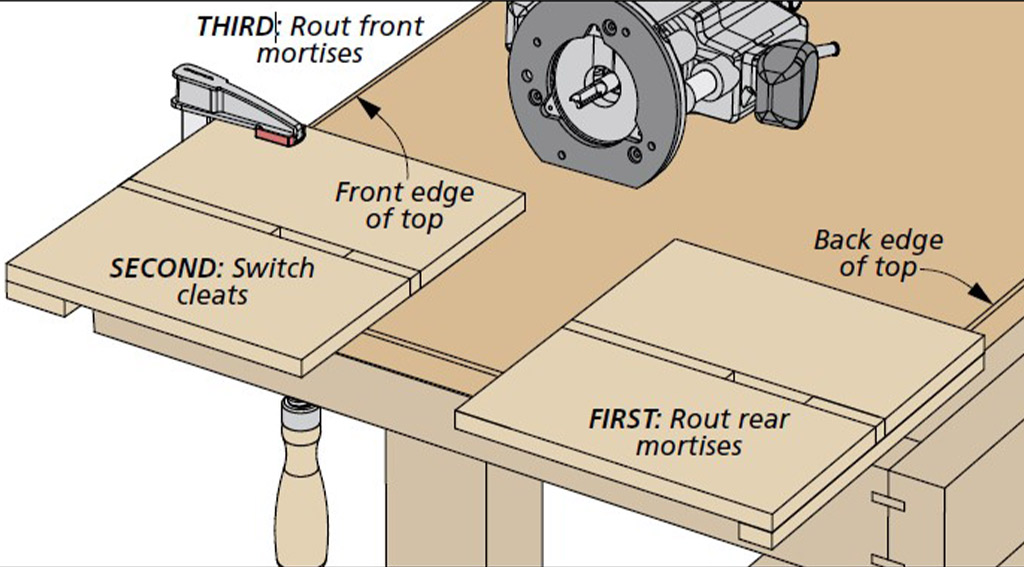

Miter joints are a great way to seamlessly join two workpieces at a right angle. Unfortunately, they aren't known for their strength. Although you can use splines or biscuits to reinforce miter joints, there's also another method - a locking miter joint.
I'll be the first one to admit that this is a fairly specialized joint. And it's probably not one that you'll use every day. But if you're looking for a unique way to build strong, mitered cases, it's worth giving locking miters a try.
Locking miter joints are well suited for plywood carcase construction. And because the joint has a good mechanical lock in one direction, it can also be used for drawer construction.
As you might guess from the name, a locking miter joint is similar to a locking rabbet joint - a tongue on the end of one piece fits into a dado cut on the inside face of the mating piece. The key difference is that the outside corner of the joint is mitered. This way, once the pieces are assembled the joint is hidden with no exposed end grain.
Locking miter joints have a few other things going for them. For one, they offer both mechanical strength and greater gluing surface than splined miters.
Second, because of the way the pieces fit together and interlock, you only have to clamp the joint in one direction (as opposed to a splined miter, which requires clamping in both directions).
And lastly, you can create a locking miter joint entirely on the table saw, without any special equipment. (For some of the steps, it's necessary to clamp a simple auxiliary fence to your rip fence.)
STEP-BY-STEP. The locking miter joint is made with the six steps shown below. One of the nice features of this joint is that after making the first cut, your workpieces become the gauge for setting up the saw for the subsequent cuts. So its possible to make this joint without any layout tools.
The drawings will walk you through each cut, but there are a few fine points worth mentioning. First, in order to achieve a closefitting joint, it's important to make sure that all your workpieces start off with square ends.
Second, I like to cut a few test pieces from the same material as my project in order to fine-tune my setups and check the fit as I go along. And lastly, I prefer to sneak up on the cuts wherever possible. This way, I can make sure I have an exact fit before making any cuts on my actual workpieces.
SIZE. For the example shown, I cut a 1/4"-wide tongue and dado in 3/4 " plywood. But you can vary the width of the tongue and dado to suit the thickness of your stock.

Cut Dado. With a dado blade installed on your table saw, use one of your workpieces as a gauge to position the rip fence as shown in detail ‘a’ above. Then cut a dado on the inside face of the side.

Cut Slot. Raise the dado blade to match the thickness of the stock. Then position the rip fence to cut a deep slot on the end of the front, creating a tongue that will fit in the dado on the side.

Rabbet Side. Next, clamp an auxiliary fence to your rip fence so it rests just above the saw blade. Now, you can cut a rabbet on the end of the side to match the thickness of the outer tongue on the front.

Trim Tongue. After switching to a single saw blade, trim back the tongue to fit in the dado cut in the side.

Miter Front. With the blade tilted to 45°, adjust the rip fence to miter the end of the outer tongue on the front.

Miter Side. Reposition the rip fence to miter the end of the side. This allows the two pieces to fit together.












